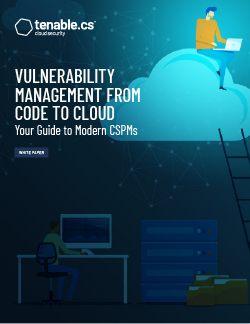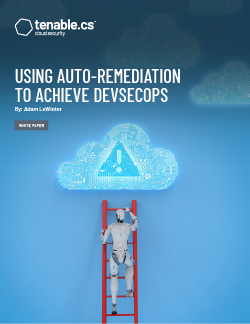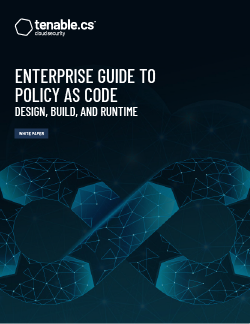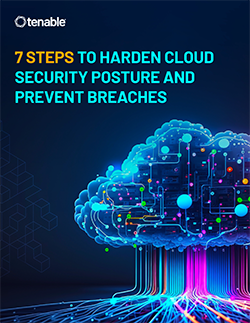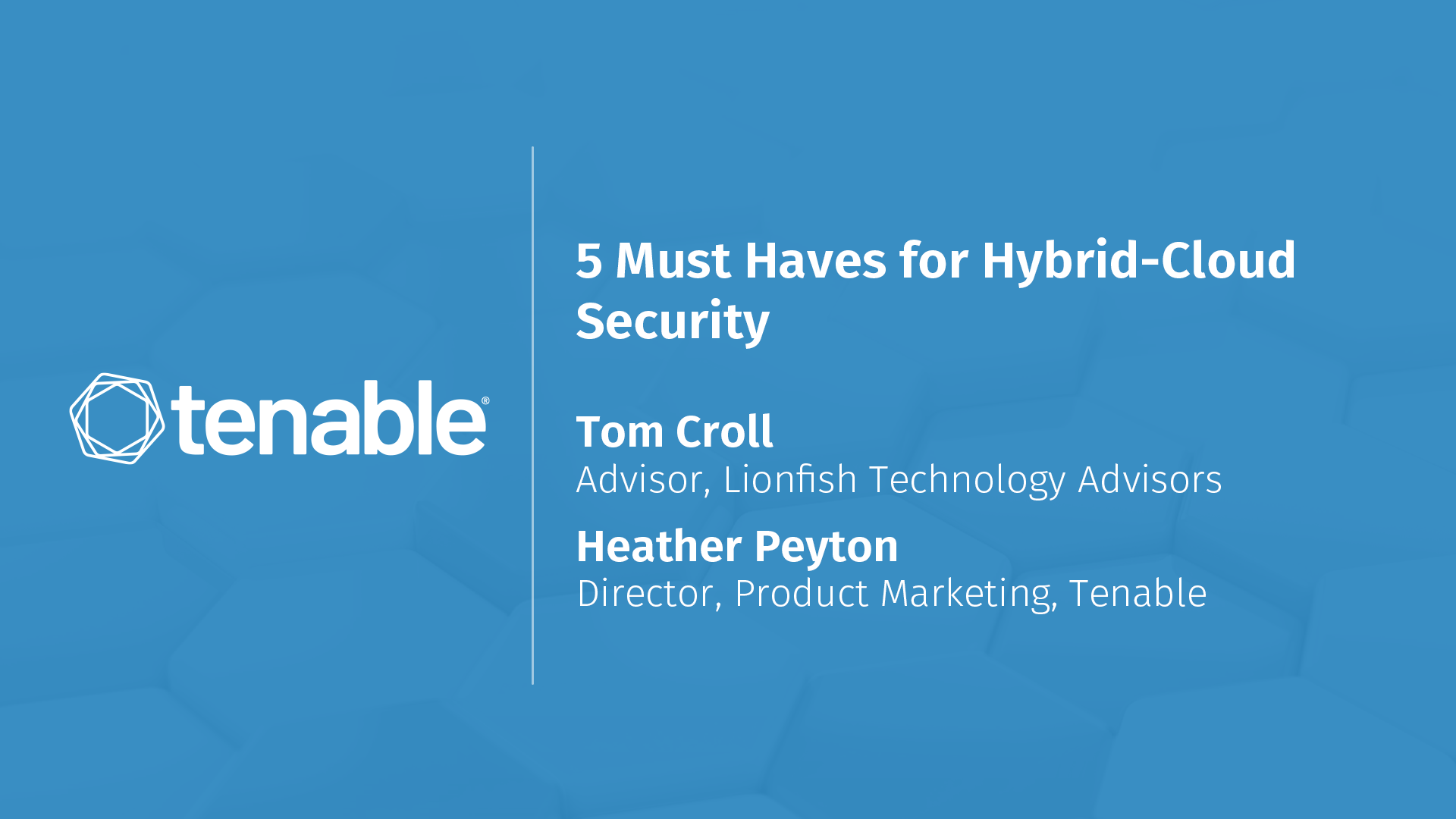Understanding Cloud Security Posture Management (CSPM)
How to Proactively Seek Out and Remediate Misconfiguration and Compliance Issues in Your Cloud Environments
Cloud security posture management (CSPM) is a proactive way to seek out and fix misconfigurations within your cloud environment. It’s an important element of a comprehensive cybersecurity strategy for your modern attack surface. Why? Because traditional, legacy approaches for on-prem infrastructure generally don’t function well in cloud environments. CSPM can help your organization discover cloud-based security issues, for example, misconfigurations, drift or other security and compliance risks.
With cloud security posture management, your cloud security teams can monitor and report on security and compliance issues across your multi-cloud environment. CSPM is also a great way to include continuous cloud security monitoring capabilities into your production environment, helping your teams uncover security issues within your cloud infrastructure so they can fix them before deployment. And then, once deployed, you can use CSPM to automatically uncover any cloud infrastructure policy violations for remediation.
In this knowledgebase, learn more about what cloud security posture management is and how, combined with risk-based vulnerability management principles, you can automate cloud-based threat detection and prioritize remediation of risks within your cloud environments.

Learn more about:
Unified Cloud Security Posture Management
Learn how to speed up cloud adoption, meet compliance standards and integrate cloud security best practices into DevSecOps.
Learn MoreA Practical Approach for Shifting Left
To manage your cloud environments effectively, shift left and integrate cloud security into your entire software development lifecycle.
Learn MoreEffective Cloud Security
The success of cloud security initiatives relies on efficient cross-team collaboration, insight and action.
Learn MoreCloud Security Cloud Cover
Join Tenable for monthly conversations about how to effectively address common cloud security challenges.
Learn MoreJoin the CSPM Community
Join other professionals interested in learning more about cloud security posture management.
Learn MoreCloud Security Posture Management FAQ
Want to learn more about cloud security posture management? Check out this FAQ for common questions.
Learn MoreWhat to Look for in a CSPM Solution
Thinking about implementing a CSPM solution? Learn about the key things every CSPM platform should do and why.
Learn MoreCSPM and Infrastructure as Code (IaC)
Resolve cloud security issues early in the software development lifecycle and continuously monitor after deployment.
Learn MoreTake Your Cloud Security Posture to the Next Level
Stop piecemealing your cybersecurity program together with disparate tools that return too much data with little or no context. Tenable Cloud Security gives you a unified, single view of your cloud attack surface so you can proactively address risks across all of your environments.
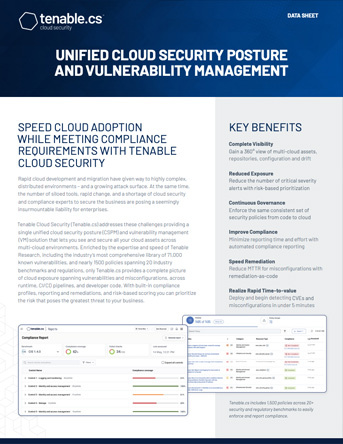
Unified Cloud Security Posture Management
Modern organizations operate across highly complex, distributed environments. As the attack surface expands and applications quickly spin up and down in the cloud, it can be increasingly difficult to get a handle on all of the risks across your threat landscape. These issues are further complicated by the lingering impact of disparate resources and tools designed to help secure your environments but instead return data that’s hard to digest and apply to your real-world work environments.
If these issues weren’t difficult enough to overcome, with a shortage of cybersecurity professionals around the globe, many teams struggle to get the right people in the right positions to ensure they’re on top of emerging risks and new vulnerabilities.
But, getting comprehensive insight across your entire attack surface — even multi-cloud environments — doesn’t have to overwhelm your teams. By implementing unified cloud security posture management, your security professionals can more effectively get visibility into all of your cloud assets, reduce risk, improve compliance and proactively remediate misconfigurations and other security issues.
In this CSPM data sheet, learn more about how you can:
- Speed up cloud adoption and meet compliance requirements
- Unify cloud security across your vulnerability management teams, cloud security architects and engineers, and developers and DevOps engineers
- Automate drift detection and orchestrate remediation
- Build cloud-security best practices into your DevSecOps workflows
Cloud Security Posture Management Insights
Vulnerability Management from Cloud to Code: Your Guide to Modern CSPMs
As your cloud environments become more complex and dynamic, it can be difficult to get visibility into all of the vulnerabilities, misconfigurations and other security issues. Many teams also get bogged down in reactive security measures, stuck in a loop of addressing exposures after deployment, instead of proactively seeking those out while still in development.
So, how do you get complete and continuous visibility into all of your assets, including those in the cloud, so you can seek out and remediate issues before attackers take advantage of them? This is where CSPM plays an important role in your exposure management strategy. By employing CSPM, your teams can effectively extend vulnerability management from code to the cloud.
This eBook explores how you can fully secure your cloud environments, find and fix software flaws and discover and remediate identity compromises and misconfiguration issues across your software development lifecycle — and down your supply chain.
Read on to learn more about:
- How to secure infrastructure as code (IaC)
- How to remediate in IaC
- What to look for in a CSPM solution
Efficiently Orchestrate Remediation to Achieve DevSecOps
Modern security teams are becoming more integrated. While breaking down traditional silos that previously hindered much-need visibility and contextual data is critical to effective exposure management, it can still be challenging to manage the security workflow across a constantly changing attack surface, especially with the pace of acceleration in cloud environments.
Legacy vulnerability management practices aren’t enough to secure the cloud; however, cloud security posture management can help teams put automation to work to effectively find and fix security issues throughout the software development lifecycle, without slowing development and before issues exist in runtime.
So, how can you identify and remediate these issues before deployment? That’s where infrastructure as code (IaC) steps in. With a shift-left away from focusing purely on remediating issues reactively in runtime, IaC is a proactive approach to discovering and fixing security issues before production.
This white paper explores how your teams can leverage orchestrated remediation for DevSecOps with confidence. Read more to learn about:
- IaC benefits
- The benefits of shifting left
- The differences between unsupervised and supervised remediation
Enterprise Guide to Policy as Code
As more organizations embrace cloud-native architecture, questions emerge about how to effectively ensure security best practices are embedded into constantly changing systems. If you’re using traditional vulnerability management practices built for on-prem IT, then you may have significant security gaps in your cloud environment.
How can your organization ensure that security is integrated into your software development lifecycle so your teams can move away from reactive measures to proactive exposure management for the cloud? This white paper takes a closer look at policy as code (PaC) and explores how you can effectively apply it to your software development lifecycle and ensure compliance with your security requirements.
Read more to learn about how to:
- Enforce security and operational policies early in design
- Use policy as code to find security issues and identify risks
- Ensure compliance with policies in runtime
7 Steps to Harden Cloud Security Posture
Cloud breaches are continuing to increase, even as organizations make more investments in cybersecurity tools such as threat detection and incident response. Almost half of breaches today are cloud-based, highlighting poor cloud cyber hygiene practices that open doors to cyberattacks.
Misconfigurations, unpatched vulnerabilities and outdated systems in the cloud are often overlooked or undetected — everything from open ports and unencrypted data to malware and permissions and authentication issues. On top of that, most security teams are already struggling to keep up with the vast amount of security alerts they get and attackers are eager to exploit any attack vector they can find.
In this ebook, learn more about:
- High-profile breaches and what you can learn from them
- How to prevent cloud breaches
- How to assess, prioritize and remediate cloud risks
- Benefits of cloud security frameworks
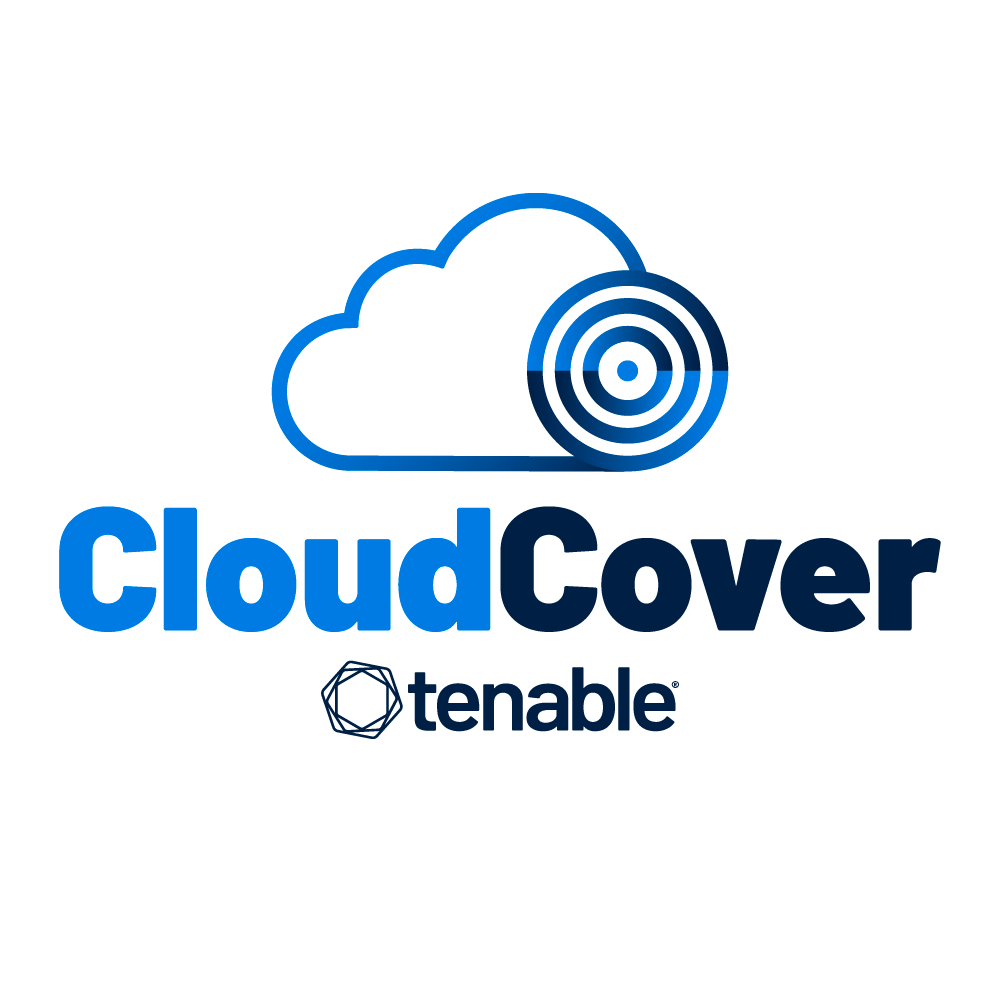
Join Tenable CloudCover
Join Tenable every month for CloudCover, an interactive workshop that dives into technical cloud security topics. Register for an upcoming session, or, if you have an idea, suggest a topic for the team to cover in a future workshop.
Tenable Connect community: Your go-to resource for cloud security posture management
If you have questions about CSPM, Tenable Connect is a great place to connect with others who have similar interests and want to learn more about building effective cloud security programs and how to mature existing cloud security measures.
CNAPP: What Is It and Why Is It Important for Security Leaders?
A cloud-native application protection platform (CNAPP) offers four key benefits to reduce risk and improve visibility. Here’s what you need to know.
Read MoreTop 5 Cloud Security Trends to Watch in 2024
Organizations will gain little benefit from generative AI if they fail to first enforce fundamental cloud security principles across multi-cloud environments.
Read MoreTake Control of your Cloud Security Program with Tenable
Agentless assessment works to quickly gather information about all your cloud resources and gives you actionable insights.
Learn MoreFrequently Asked Questions about CSPM
Are you new to cloud security posture management? Do you have questions about CSPM but not sure where to start? Check out some of these commonly asked questions to learn more.
What is cloud security?
What is cloud security posture management (CSPM)?
Why is cloud security posture management important?
What are some key CSPM capabilities?
What are some CSPM benefits?
What’s the role of automation in cloud security posture management?
What is a cloud security misconfiguration?
What is policy as code?
What is infrastructure as code (IaC)?
What is runtime?
What is security as code (SaC)?
What is remediation as code (RaC)?
What is drift as code (DaC)?
What is a cloud workload protection platform (CWPP)?
What is a cloud access security broker (CASB)?
What is a cloud-native application protection program (CNAPP)?
How are CSPM and CNAPP related?
What is SaaS security posture management (SSPM)?
What’s the difference between CSPM and SSPM?
What is a CNSP?
How to Choose a Modern CSPM Tool to Reduce Your Cloud Infrastructure Risk
As more organizations embrace the cloud, especially with the growing number that moved to remote teams during the pandemic, security and compliance teams are trying to keep up with managing cloud risks. Cloud security posture management is a tool that can help. With automated detection, teams can ramp up their abilities to detect and fix cloud security and compliance issues, especially for those developed and deployed in the cloud.
While CSPM initially focused on finding and fixing exposures in runtime, along with monitoring for drift, it’s becoming increasingly necessary to shift left to give much-needed attention to security throughout the entire software development lifecycle — from code to cloud.
But, with many CSPM solutions on the market, how do you know which is best for your organization?
First, look for a cloud security solution that enables your teams to do four key things:
-
Secure infrastructure as code (IaC)
Ask questions such as:
- Which types of IaC are supported?
- How many predefined policies are available?
- Which compliance and security standards are supported?
-
Monitor infrastructure configurations in runtime
Ask questions such as:
- Which runtime environments are supported?
- Does the solution identify resource creation or termination relative to a secure baseline defined through IaC?
- Does the solution identify changes to the configuration of a resource from its definition in the IaC baseline?
-
Remediate through IaC with IaC serving as a single source of truth
Ask questions such as:
- When a change is made in runtime, does the solution automatically generate the code to resolve the issue?
- Does the solution programmatically create pull or merge requests with the code update the IaC and remediate the drift created in runtime?
-
In addition to these key areas, look for a cloud security posture management solution that will:
- Programmatically detect and resolve misconfigurations during development via IaC
- Maintain security posture in runtime
- Have these four key capabilities:
- Policy as code
- Security as code
- Remediation as code
- Drift as code
Want more information about what to look for in a CSPM solution and how to discover which CSPM is best for your organization? Check out our guide, "Vulnerability Management from Cloud to Code: Your Guide to Modern CSPMs."
Learn MoreContinuous Security Posture and Risk Management of Infrastructure-as-Code
For most cloud-native applications, a traditional approach to cloud security focuses on discovering infrastructure-related vulnerabilities such as policy violations and cloud-resource misconfigurations after deployment. Yet, doing so inherently introduces unnecessary cyber risks into your cloud environment. Once these issues happen in runtime, there is an increased chance an attacker could exploit them.
The alternative and much-more proactive solution is to seek out and resolve these security issues early in the software development lifecycle and then continuously monitor after deployment.
So, how do you do this? It begins with integrating cloud security from an infrastructure as code perspective so you can more effectively see and address your risks from coding and integration and from delivery through deployment.
With Tenable Cloud Security, for example, you can detect and remediate security risks even before provisioning your public cloud infrastructure for cloud-native applications. From there, it can also help prevent vulnerabilities or other security issues from occurring in IaC. Then, after development, you can use it to detect any changes to your cloud environment, and then update source code so application updates don’t create new vulnerabilities.
Proactively Address and Manage Your Cloud Security Risks
Tenable Cloud Security will empower your cloud security teams with a unified view of all of your cloud assets and their related vulnerabilities so you can understand where you’re exposed to cloud risks, anticipate the attack consequences and then effectively remediate issues and communicate risks across your organization for better decision-making.
Cloud Security Posture Management Blog Bytes

Security Defined As Code
Most modern organizations now have a cloud-first strategy. With that, what was once a lengthy process to deploy new applications can now be done with just a few commands. And while that creates a number of operational benefits and efficiencies, it also introduces new risks your security team must be prepared to seek out, act upon and continuously manage. This blog takes a closer look at security defined as code and why it should be an integral part of your cybersecurity program.

Cyber Concerns Still Hamper Cloud Value
During a Tenable webinar, attendees were asked about their cloud security practices, revealing that almost 50% use a combination of hybrid cloud, on-prem and multi-cloud environments, yet less than 35% currently have a cloud security posture management solution in production. This blog takes a closer look at some of the top issues in cybersecurity, including exploring if cyber concerns will still hamper cloud value and remain an obstacle.

A Practical Approach for Shifting Left
Legacy cloud security posture management practices have long focused on finding and remediating security issues in runtime, which creates increased opportunities for attackers to exploit them. To manage your cloud environments more effectively, it’s necessary to shift left and think about integrating cloud security into your entire SDLC. This blog takes a closer look at ways your DevOps teams can find and fix vulnerabilities and misconfigurations early and monitor them for changes post-deployment.
CSPM On Demand
5 Must Haves for Hybrid-Cloud Security
Modern attack surfaces are complex and finding the best way to manage all your risks most effectively is challenging — especially for teams that must secure and protect environments that span on-prem, in the cloud, multi-cloud and hybrid. As your attack surface expands, it’s more complicated and legacy vulnerability management practices won’t reduce risk as much as you need. The alternative? Building a hybrid-cloud security strategy that addresses today’s risks.
In this webinar, learn more about:
- Some of the key lessons learned from public-cloud security models
- Applying the five pillars of hybrid cloud security
- What your teams should think about for creating secure hybrid-cloud apps
Unified Cloud Security Posture and Vulnerability Management
As cloud environments become more dynamic and complex, security teams face challenges with knowing what all their cloud assets are, who’s using them, and how they’re being used. Without this insight, it’s hard to know which vulnerabilities and security weaknesses need your attention. And, if your teams are manually tracking these assets, it’s nearly impossible to keep an accurate inventory. If you don’t know what you have, especially in the cloud, how can you secure it?
Tenable Cloud Security enables your organization to embrace and accelerate cloud adoption strategies with confidence you’re meeting cloud security and compliance requirements. It creates a unified view of your attack surface, enabling automated cloud vulnerability management.
Here are a few benefits of Tenable Cloud Security:
Find Drift, Stop Deployment Issues
Continuously track configuration drift between IaC code repositories and cloud runtime, including insight into code changes and pull requests to remediate or update source code.
Comprehensive Visibility
See all of your assets across your clouds and within repositories in a unified view with associated vulnerabilities, misconfigurations and other security issues.
Prioritization and Remediation
Risk-based scoring with asset criticality and threat severity reduces noise by a factor of 23:1 and prioritizes remediation based true exposure risk to your business.
Continuous Governance
Tenable Cloud Security can ensure ongoing compliance with mandates, including 100% detection of cloud-to-cloud and code-to-cloud drift.
Try Tenable Cloud Security
Secure All of Your Cloud Assets with Tenable Cloud Security
- Tenable Cloud Security
